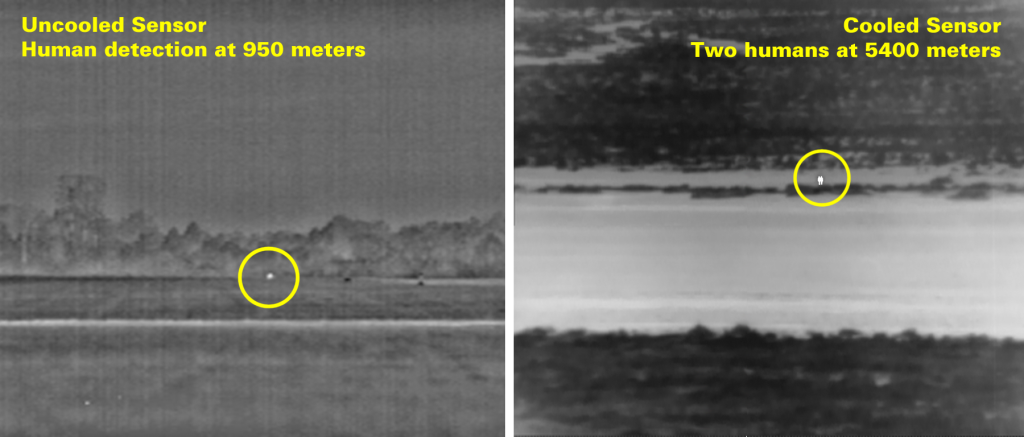Cooled vs. Uncooled Detectors
When selecting a thermal imager, you may encounter two types of detectors: cooled and uncooled. The main distinction between the two lies in whether the detector needs to be cooled to cryogenic temperatures to function properly.
Uncooled Detectors
Uncooled detectors operate in the Long Wave Infrared (LWIR) range, typically between 7.5µm and 14µm (with slight variations across different manufacturers). These detectors do not require cryogenic cooling, though they are often temperature-stabilized using Peltier coolers to ensure reliable performance.
Cooled Detectors
Cooled detectors, on the other hand, generally work in the Mid Wave Infrared (MWIR) range, around 3.0µm to 5.0µm. These detectors rely on cooling to temperatures as low as 77K (with some newer systems requiring cooling only down to around 130K). They achieve this cooling with built-in micro-refrigeration coolers, which operate on a closed cycle to cool the detector chip and release the heat to a heat sink. The lifespan of these coolers typically ranges from 10,000 to 20,000 hours of continuous use, but frequent power cycling can shorten this lifespan.
Key Differences: Sensitivity and Cost
Cooled detectors are significantly more sensitive which allows them to use higher f-number (flower) lenses. These lenses reduce the cost of using long focal length optics. In contrast, uncooled detectors, being less sensitive, need lower f-number lenses to capture enough energy, which can increase the overall cost of the system.
While cooled detectors are typically more expensive, the ability to use smaller optics with higher f-numbers can make them more cost-effective in long-range thermal imaging systems. For focal lengths longer than 250mm, the cost savings from smaller optics outweigh the higher detector costs, which is why most long-range thermal imagers use cooled detectors.
When to Use Cooled Detectors
The decision to use cooled or uncooled detectors also depends on factors like the environment. For example, in humid environments, where water vapor strongly absorbs LWIR radiation, MWIR (cooled detector) systems may be necessary for better performance.
In summary, the choice between cooled and uncooled detectors depends on your imaging needs, distance, and environmental conditions.

